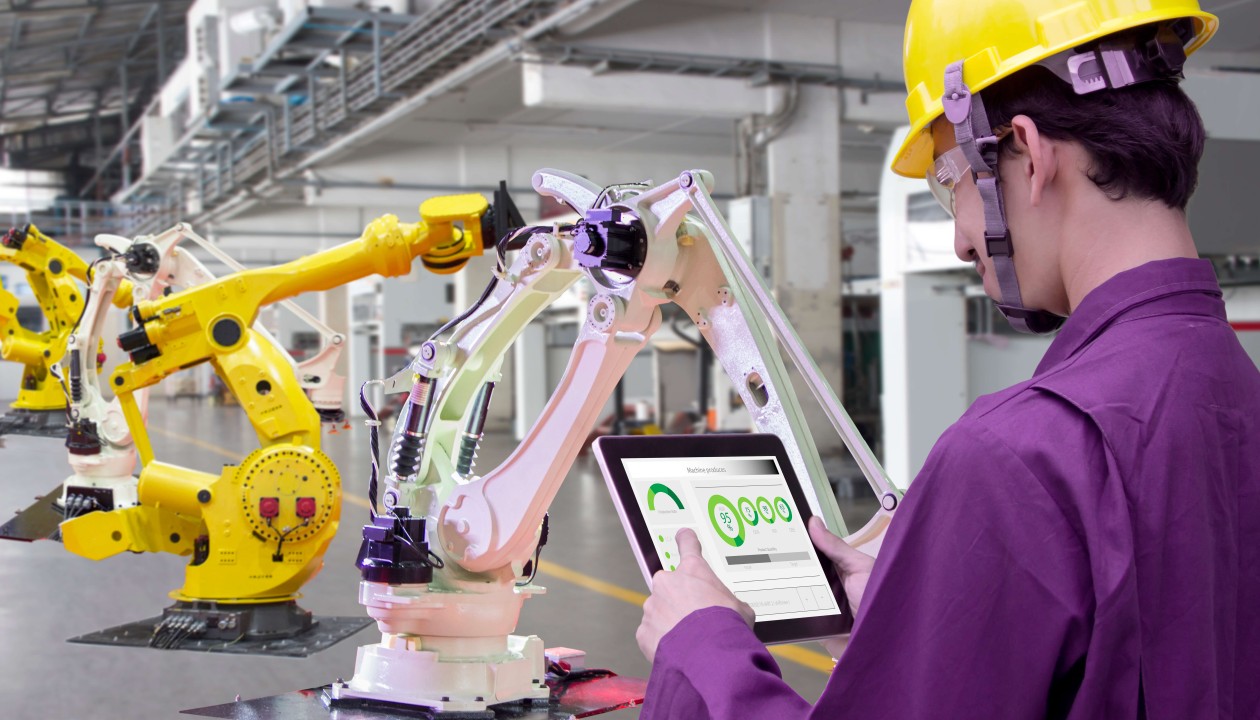
The Potential Applications of Advanced Robotics in Industry
By Adedayo Oyetoke, Published on: June 5th 2024 5 min, 881 word Views: 1061
The industrial landscape is on the cusp of a revolution, driven by the relentless march of advanced robotics. These aren't your clunky, pre-programmed bots of yesteryear. We're talking about sophisticated machines imbued with artificial intelligence (AI), machine learning (ML), and advanced sensor technology. They're poised to transform every facet of industry, from the factory floor to the oil fields, and the possibilities are nothing short of mind-blowing.
Beyond Repetitive Tasks: A Symphony of Automation
Traditionally, robots have been the champions of repetitive tasks – welding car parts, assembling electronics, and tirelessly painting vehicles on an assembly line. But advanced robotics is shattering this limitation. With AI and machine learning at the helm, these new-age robots can adapt to changing environments, learn new skills, and even make real-time decisions. Imagine a robot chef in a bustling kitchen, not just flipping burgers but dynamically adjusting cooking times and temperatures based on the thickness of the steak – that's the power we're talking about!
Unveiling a Kaleidoscope of Applications
The potential applications of advanced robotics in industry are as diverse as they are exciting. Let's delve into a few key areas:
- Manufacturing Marvels:
Imagine a factory floor teeming with robots seamlessly collaborating with human workers. Advanced cobots (collaborative robots) equipped with vision systems and AI can handle delicate tasks like picking and placing intricate components, while human workers oversee the process and make strategic adjustments. This human-robot synergy will usher in a new era of efficiency and precision in manufacturing. Learn more about the impact of advanced robotics in industries. - Logistics Leapfrog:
The world of logistics is about to get a serious boost. Autonomous mobile robots (AMRs) will navigate warehouses with ease, intelligently transporting goods and optimizing storage space. Imagine a hive of AMRs buzzing around, fulfilling orders with laser-like accuracy – that's the future of logistics, folks. Explore how robotics is transforming logistics. - Inspection Innovation:
Advanced robots equipped with advanced sensors and non-destructive testing (NDT) capabilities can become the ultimate inspectors. They can navigate hazardous environments in refineries or crawl through tight spaces in airplanes, meticulously identifying cracks, corrosion, and other potential problems, keeping us all safe. Discover innovations in robotic inspection. - Healthcare Revolution:
In healthcare, robotics is making waves with innovations like surgical robots. These machines assist surgeons in performing intricate procedures with enhanced precision and minimal invasiveness. The da Vinci Surgical System, for instance, is used in various complex surgeries, offering greater control and reducing recovery times for patients. Read more about the da Vinci Surgical System. - Agricultural Efficiency:
Robotics in agriculture, known as agribots, is transforming the way farming is done. These robots can perform tasks such as planting, weeding, and harvesting with precision. Drones equipped with sensors and cameras are used for crop monitoring, ensuring optimal growth conditions and early detection of issues like pest infestations. Learn about Harvest Automation. - Construction Site Safety:
In the construction industry, robots are employed for tasks that are dangerous or difficult for humans. Autonomous machinery can perform activities such as bricklaying, concrete dispensing, and welding in hazardous environments, enhancing safety and productivity. The SAM100 (Semi-Automated Mason) is a robotic bricklayer that can lay bricks at a much faster rate than human workers. Find out more about the SAM100. - Culinary Consistency:
In the food and beverage industry, robots are used for food preparation, cooking, and packaging. They ensure hygiene and consistency, especially in processes that require high precision. For example, Miso Robotics has developed a robot named Flippy, designed for fast-food kitchens. Flippy can cook burgers, fry chicken, and even prepare salads. Discover Flippy by Miso Robotics. - Exploration and Mining:
Robots are essential in exploration and mining, particularly in environments that are too dangerous for humans. Autonomous robots are used for deep-sea exploration, space missions, and mining operations, where they perform tasks such as drilling, surveying, and sample collection. NASA’s Mars rovers, such as Curiosity and Perseverance, are advanced robots designed to explore the Martian surface. Learn about NASA's Mars Rovers.
The Human Factor: A Collaborative Future
But fear not, fellow humans! The rise of advanced robotics doesn't signal the end of human jobs. Instead, it signifies a transformation. We'll be shifting from monotonous, physically demanding tasks to roles that require creativity, problem-solving, and oversight. We'll be the masterminds behind the robots, constantly innovating and pushing the boundaries of what's possible.
The Road Ahead: Embracing the Change
The integration of advanced robotics in industry is inevitable. It presents a multitude of benefits – increased productivity, improved safety, and enhanced product quality. But like any significant change, it requires careful planning and adaptation. To ensure a smooth transition, here are some key considerations:
- Investing in Training: Equipping human workers with the skills necessary to collaborate with robots is paramount. Training programs in robotics operation, maintenance, and data analysis will be crucial.
- Safety First: Robust safety protocols and regulations need to be established to ensure the safe co-existence of humans and robots in the workplace.
- Ethical Considerations: As AI becomes more sophisticated, ethical questions around decision-making and potential biases will arise. Open discussions and clear guidelines are essential.
By embracing advanced robotics with a human-centric approach, we can unlock a future of industrial prosperity and progress. It's a future where humans and machines work together, not against each other, to achieve remarkable things. Buckle up, because the ride is about to get extraordinary!
